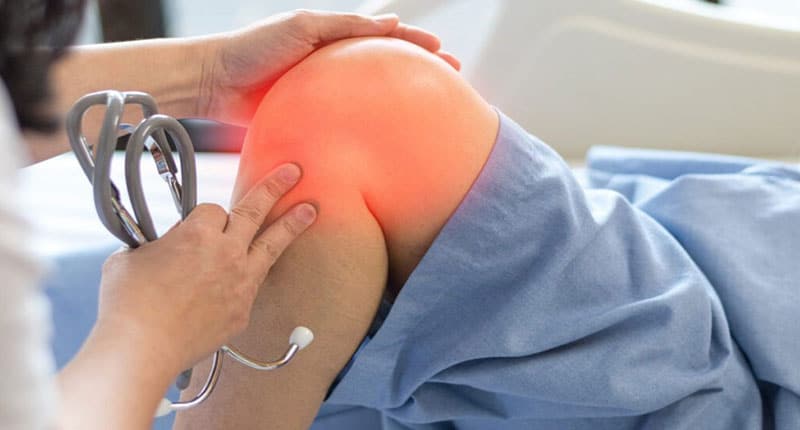
Osgood-Schlatter disease is a common condition that affects the knees, especially in active adolescents. It is characterized by pain and swelling below the kneecap, where the patellar tendon attaches to the tibia, the larger bone in the lower leg. This article aims to provide a comprehensive understanding of Osgood-Schlatter disease, including its causes, symptoms, diagnosis, treatment options, and preventive measures.
Osgood-Schlatter disease is named after the two physicians who first described it in 1903: Robert Osgood and Carl Schlatter. It commonly occurs during growth spurts when bones, muscles, and tendons are rapidly developing. Although it is not a serious condition, it can cause significant discomfort and limit participation in physical activities. Understanding the causes, symptoms, and treatment options for Osgood-Schlatter disease can help individuals manage the condition effectively.
Anatomy of the Knee
Before delving into the details of Osgood-Schlatter disease, it is essential to understand the anatomy of the knee. The knee joint is a complex structure comprising bones, cartilage, ligaments, tendons, and muscles. The femur (thigh bone), tibia (shin bone), and patella (kneecap) form the major bones of the knee, while the patellar tendon connects the patella to the tibia.
What is Osgood-Schlatter Disease?
Osgood-Schlatter disease is a condition that primarily affects growing adolescents, particularly those involved in activities that exert repetitive stress on the knee. It occurs when the patellar tendon pulls on the tibial tuberosity, a bony prominence located just below the knee joint. This repetitive stress can cause inflammation, swelling, and pain.
Causes and Risk Factors
The exact cause of Osgood-Schlatter disease is still not fully understood. However, several factors contribute to its development. Rapid bone growth during adolescence, intense physical activities that involve jumping or running, and tightness or imbalance of the muscles around the knee are believed to be the primary causes. Additionally, certain risk factors, such as gender (more common in males) and family history, can increase the likelihood of developing the condition.
Signs and Symptoms
The most common symptom of Osgood-Schlatter disease is pain and swelling just below the kneecap. The pain may worsen during physical activities and improve with rest. Other symptoms may include tenderness, warmth, and a visible bump or prominence on the tibial tuberosity. The affected knee may also feel weak or unstable.
Diagnosis
To diagnose Osgood-Schlatter disease, a healthcare professional will review the individual’s medical history, perform a physical examination, and evaluate the symptoms. Imaging tests, such as X-rays or MRI scans, may be ordered to rule out other conditions and assess the severity of the disease.
Treatment Options
The treatment approach for Osgood-Schlatter disease depends on the severity of symptoms and their impact on daily activities. In most cases, the condition can be managed with non-surgical interventions. However, for severe cases that significantly affect the individual’s quality of life, surgical options may be considered.
Non-Surgical Approaches
Rest and Activity Modification
Rest is crucial to allow the knee to heal and recover. Reducing or modifying activities that worsen the pain, such as jumping or running, can help alleviate symptoms. Low-impact exercises, such as swimming or cycling, may be recommended as alternatives.
Physical Therapy
Physical therapy plays a vital role in managing Osgood-Schlatter disease. It focuses on strengthening the muscles around the knee, improving flexibility, and correcting any muscle imbalances. Physical therapists may also employ techniques to reduce pain and inflammation.
Pain Relief Measures
Over-the-counter pain medications, such as acetaminophen or nonsteroidal anti-inflammatory drugs (NSAIDs), can provide temporary relief from pain and reduce inflammation. Cold or warm compresses applied to the affected knee may also help alleviate discomfort.
Knee Braces or Straps
Wearing a knee brace or strap can provide additional support to the knee joint and help distribute forces more evenly. These braces or straps can help reduce pain and discomfort during physical activities.
Surgical Interventions
Surgical intervention for Osgood-Schlatter disease is rare and typically reserved for severe cases that do not respond to conservative treatment. Surgical procedures aim to remove any bony fragments, smooth the tibial tuberosity, or reattach the patellar tendon if it has detached.
Rehabilitation and Recovery
Following any surgical intervention or even with non-surgical treatment, rehabilitation is crucial for full recovery. Physical therapy exercises, guided by a healthcare professional, help restore strength, flexibility, and function to the knee. Gradual return to physical activities is recommended, with a focus on proper technique and gradual progression.
Prevention
Although Osgood-Schlatter disease cannot be completely prevented, certain measures can help reduce the risk and severity of the condition. These include:
- Incorporating proper warm-up and cool-down exercises before and after physical activities.
- Ensuring a well-balanced diet rich in essential nutrients for bone and muscle health.
- Wearing appropriate footwear that provides proper support and cushioning.
- Avoiding overuse and excessive stress on the knee by incorporating rest days and cross-training activities.
- Regularly stretching and strengthening the muscles around the knee.
Frequently Asked Questions (FAQs)
Q1. Can Osgood-Schlatter Disease occur in adults?
- Osgood-Schlatter Disease primarily affects children and adolescents during periods of rapid growth. Once the bones have finished growing, the condition typically resolves.
Q2. Is surgery required to treat Osgood-Schlatter Disease?
- Surgery is rarely necessary for Osgood-Schlatter Disease. Most cases can be managed with conservative treatment options, such as physical therapy and pain management techniques.
Q3. How long does it take for Osgood-Schlatter Disease to heal?
- The duration of healing varies from person to person. In most cases, the symptoms improve within a few months to a year. However, it can take longer for complete resolution, especially during periods of rapid growth.
Q4. Can Osgood-Schlatter Disease recur after treatment?
- While the symptoms of Osgood-Schlatter Disease may recur during periods of physical activity, they typically subside with proper management and adherence to preventive measures.
Q5. Can Osgood-Schlatter Disease lead to long-term complications?
- Osgood-Schlatter Disease rarely leads to long-term complications. Once the child reaches skeletal maturity, the symptoms typically resolve, and there is no increased risk of arthritis or other knee problems.
